#royal canadian navy
Text

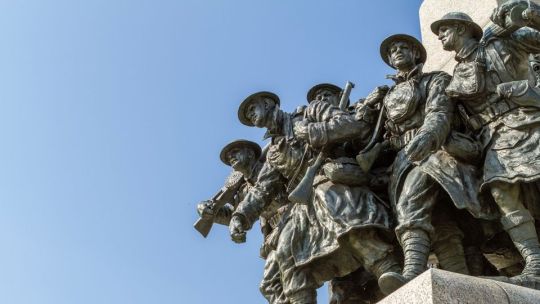
Built to honour the fallen of The Great War, Canada's War Memorial was unveiled by King George VI & Queen Elizabeth in Ottawa during the Royal Tour of 1939.. three months before the outbreak of WWII.
#National War Memorial#Ottawa#Remembrance Day#WWI#WWII#Korean War#RCAF#Royal Canadian Navy#The Fallen#British Empire#King George VI#Queen Elizabeth#May 1939
89 notes
·
View notes
Photo

The “Grey Ghosts” flying the McDonnell F2H-3 Banshee
Banshees were the primary aircraft of the short-lived Royal Canadian Navy Grey Ghosts aerobatic team. The team's name was a play on the Banshee name and the RCN color scheme. The RCN's Banshee fleet was too small to maintain a special contingent of aircraft for airshow service, so the team simply flew whichever active-duty Banshees were available at the time of each show.
80 notes
·
View notes
Text
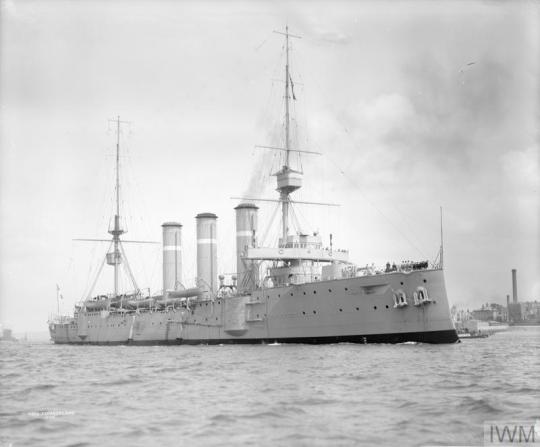
Armoured cruiser HMS Cumberland in 1909 (Imperial War Museum).
Aside from first-class training, the Canadian personnel were indoctrinated into a tradition-steeped, ritualized way of life. Houghton recalled some of the sacrosanct customs of the Gunroom, the name for the accommodation compartment reserved for midshipmen, in HMS Cumberland in 1915-16:
Then there are the Gunroom traditions that go back well before the days of Nelson. One of these is ‘Breadcrumbs.’ If the Sub [sub-lieutenant in charge of the midshipmen] and the senior snotties [midshipmen] happen to be discussing some matter which is not considered fit for the ears of juniors, the Sub gives the order ‘Breadcrumbs!’ Whereupon all warts — as they are usually known — hurriedly jam their fingers in their ears. Sometimes the Sub will address some unsuspecting wart in his normal voice, and if the chap so much as twitches, indicating that he had unstopped an ear, he was for it.
— Canada and the Battle of the Atlantic, Roger F. Sarty
#great war#first world war#naval history#age of steam#royal navy#royal canadian navy#hms cumberland#midshipmen#the sea#i've not heard of this one#if it truly goes back to the days of nelson#this seems like something that would be in a novel by marryat#canadian history#military history
7 notes
·
View notes
Text

HMCS Athabaskan, Halifax, 1990
#HMCS Athabaskan#Halifax#1990#RCN#Royal Canadian Navy#Destroyer#Iroquois Class#naval#nautical#photography#hide and queue
11 notes
·
View notes
Text
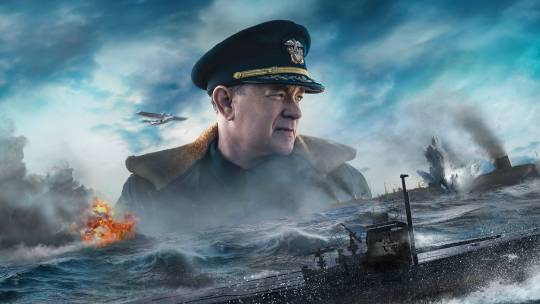
Greyhound (2020)
#2020#film#movie#WWII#naval military#aviation#Greyhound#Tom Hanks#Commander Ernest Krause#Ernest Krause#Stephen Graham#Charlie Cole#USS Greyhound#U.S. Navy#Dicky#HMCS Sackville#Royal Canadian Navy#Battle Of The Atlantic#Kriegsmarine#U-boat#submarine#Consolidated#Catalina#PBY-5A
5 notes
·
View notes
Text


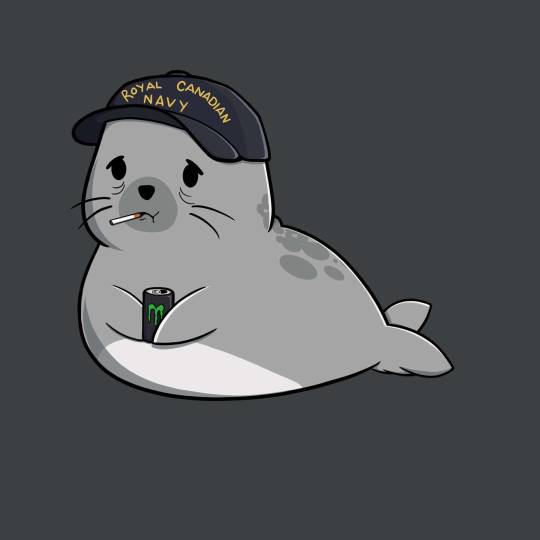
Expectation vs. Reality for the Royal Canadian Navy.
#royal canadian navy#navy meme#military humor#military#this is a joke#navy seal#seal#morale art#digital art#artists on tumblr#illustrator#drawing#navy life#cute animal#depressed sailor joke#digital sketch
3 notes
·
View notes
Photo
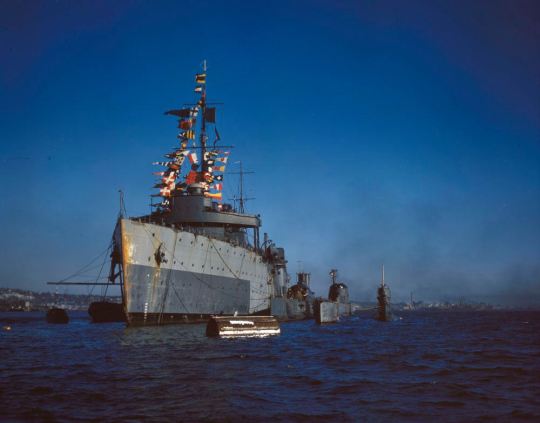
Free French Naval Forces sub Surcouf in Halifax Harbour (closest to depot ship) in 1941.
Here, Royal Navy Depot Ship HMS FORTH with the Free French submarine SURCOUF and two other Royal Navy submarines rest in Halifax Harbour. (Source)
#halifax#world war II#depot ship#royal navy#surcouf#forces navales françaises libres#croiseur sous-marin#la france libre#free french#silent service#submarine warfare#submarines#canada during world war 2#royal canadian navy
6 notes
·
View notes
Text
Canadian Navy offers ‘no strings attached’ program amid recruitment woes
The Royal Canadian Navy is offering a one-year trial period for Canadians to join with “no strings attached” as it faces a major recruitment challenge and unprecedented personnel shortage.
Under the new program launched Friday, Canadian citizens and permanent residents can join the navy on a year-long contract – either full-time or part-time – and then leave if they wish to after that.
Those who…

View On WordPress
#CAF#caf recruitment#Canada#Canada Military#Canada military news#Canada navy#Canada navy recruitment program#Canadian Armed Forces#military recruitment#naval experience program#Politics#Royal Canadian Navy
0 notes
Text

Trawlermen looking for identification marks on a derelict raft they had found at sea.
#historical photos#the first world war#world war 1#world war one#wwi#1917#the great war#ww1#history#canadian history#sea#ocean#navy#royal navy
123 notes
·
View notes
Text

Both General Wolfe & General Montcalm died of their battle wounds

The Battle of Quebec surrendered New France to the British Empire
#Battle of Quebec#On this day#Royal Navy#British Army#Canadian history#General James Wolfe#Seven Years War#St Lawrence River#Plains of Abraham#13 September 1759
12 notes
·
View notes
Text


Provincial Marine of Canada, Officers 1812-1813 (details), by Peter Rindlisbacher. A commissioned painting for the Company of Military Historians.
A British officer, whose regiment marched from New Brunswick to Kingston in the late winter of 1813, was amazed to see a squadron of warships on Lake Ontario. "It produced a striking and indescribable sensation," he recorded, as he had never contemplated finding "a fleet of men of war on a fresh water lake."
— Historian Donald E. Graves, in the introduction to War of 1812: The Marine Art of Peter Rindlisbacher.
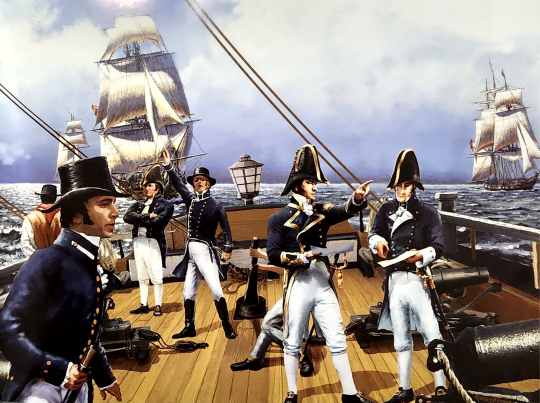
From left to right: midshipman, surgeon, sub-lieutenant, captain, and lieutenant.
#age of sail#war of 1812#military history#royal navy#great lakes#lake ontario#naval history#maritime history#naval uniform#dressed to kill#peter rindlisbacher#marine art#naval art#uniforms#1810s#military dress#history#canadian history#provincial marines
48 notes
·
View notes
Text
Life on board a 17th century warship
The sailing crew was divided into two watches under the two lieutenants, each working for four hours while the other rested. While off duty, they were expected to stay below decks and out of the way, but could be called to work at any time if all hands were required, such as when anchoring or making a major sail change. When below, they probably tried to sleep as much as they could, since the four-hour schedule is not natural and quickly leads to fatigue. When not sleeping, they probably used much of the time off watch to mend their clothes and shoes, but they might relax with games, music or a popular new pastime, smoking, although this was only allowed in the cookroom.

War Ships 17th Century, by Jefferys, Charles W. 1942 in: The Picture Gallery of Canadian History Volume 1, p.99
Food was also prepared in the cookroom, a brick-lined hearth in front of the mainmast in the hold, and carried up to the gundecks in buckets, where it was doled out into big wooden bowls. Depending on the ship, food could also be prepared in the galley, which was located in the forecastle or midships.
Each man had his own wooden spoon, and some had wooden plates, but most ate from the bowl shared by a mess, a group of six or seven men who ate and lived together. They drank weak beer, "ship's ale," from a shared wooden tankard. The base of the diet was salted meat for protein and dried peas and bread for carbohydrates. Barrels full of bones found in the hold show that the meat was mostly beef, with a little pork and mutton, as well as fish and poultry. Interessting fact was that some of the crew were prepared to supplement this, as fishing equipment and hunting weapons were found in shipwrecks like the Vasa, as well as the bones of roe deer, moose, and grouse. The skeletons of chickens suggest that a few fresh eggs were available.
As in other navies, they did not issue uniforms in that time, the men had to buy or make their own clothes. In some cases cloth was provided as part of their salary, but the typical sailor's clothing was the same as the clothing they arrived in from the farm or town: a linen shirt, a short, skirted woollen doublet (jacket), wool trousers that ended below the knee, woollen socks, and leather shoes. Many had broad-brimmed hats or conical caps. The cloth varied from coarse homespun to imported dyed fabrics, but almost all sailors sewed strips of contrasting cloth or even lace down the outside seams of their trousers in imitation of the clothing worn by the well-to-do. Clothes had to be hard-wearing, since most people could not afford more than one set.
The senior officers lived aft in the cabins of the sterncastle, where they had more space, glass windows, proper furniture, and ate their meals from pewter or earthenware table service. They had finer clothes, but as more than one visitor to Sweden from the continent remarked, it was difficult to tell the nobles from the peasants, since they dressed alike. The officers also had to share their accommodation, sleeping in pairs in narrow double beds, but the cabins were built to resemble the interior of houses ashore. The great cabin, where the king or an admiral would stay, was fitted out like a room in the royal palace, with fine panelling and carved sculptures that emphasised the power of the people who lived there.
The 17th century was a violent period, and both on shore and at sea brutal punishments were prescribed for even minor crimes. Conscripts often came from rough backgrounds, but discipline was essential for the smooth and safe functioning of a ship. In crowded conditions, small disagreements could easily blow up into fights, grumbling could turn to mutiny. Officers had to earn the trust of the men they commanded, but needed the option of punishment for the intractable. The articles of war specified that a person causing a fire was to be cast into the same fire, a person starting a fight was to be stabbed through the hand with a knife, blasphemers and those speaking ill of the king or his officers were to be keelhauled, murderers should be tied to their victims and thrown in the sea. In practice, a captain who had to use these punishments too often risked losing the respect of his men and his fellow captains and could not rule for long.
279 notes
·
View notes
Text

Northern lights flare above a Royal Canadian Navy offshore patrol vessel
177 notes
·
View notes
Text
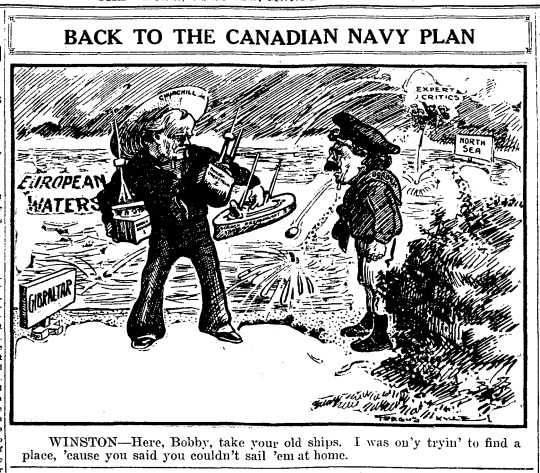
"BACK TO THE CANADIAN NAVY PLAN," Toronto Globe. March 31, 1913. Page 2.
---
WINSTON - Here, Bobby, take your old ships. I was on'y tryin' to find a place, 'cause you said you couldn't sail 'em at home.
#canada in the british empire#royal canadian navy#canadian politics#canadian history#british empire#royal navy#canadian nationalism#borden government#winston churchill
0 notes
Text
SEALAND BRITAIN WAR
Sealand side: Ireland, Illinois, the US navy, Guatemala, Shell Jr, Femboy monster energy, A couple of suburban moms with Molotov cocktails, Royal Canadian Air Force, Denmark, Russia, India, Hot Topic, the Trenchcoat people, France, Scotland, Australia, Sanrio, Femboy Sanrio, Florida, femboy Sam, femboy asus
Britain side: Britain
96 notes
·
View notes